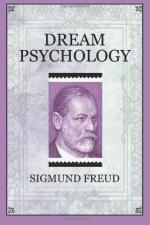It is quite remarkable how the dreamer behaved after this interpretation. She withdrew her description of the hat, and claimed not to have said that the two side pieces were hanging downwards. I was, however, too sure of what I had heard to allow myself to be misled, and I persisted in it. She was quiet for a while, and then found the courage to ask why it was that one of her husband’s testicles was lower than the other, and whether it was the same in all men. With this the peculiar detail of the hat was explained, and the whole interpretation was accepted by her. The hat symbol was familiar to me long before the patient related this dream. From other but less transparent cases I believe that the hat may also be taken as a female genital.
2. The little one as the genital—to be run over as a symbol of sexual intercourse (another dream of the same agoraphobic patient).
“Her mother sends away her little daughter so that she must go alone. She rides with her mother to the railroad and sees her little one walking directly upon the tracks, so that she cannot avoid being run over. She hears the bones crackle. (From this she experiences a feeling of discomfort but no real horror.) She then looks out through the car window to see whether the parts cannot be seen behind. She then reproaches her mother for allowing the little one to go out alone.” Analysis. It is not an easy matter to give here a complete interpretation of the dream. It forms part of a cycle of dreams, and can be fully understood only in connection with the others. For it is not easy to get the necessary material sufficiently isolated to prove the symbolism. The patient at first finds that the railroad journey is to be interpreted historically as an allusion to a departure from a sanatorium for nervous diseases, with the superintendent of which she naturally was in love. Her mother took her away from this place, and the physician came to the railroad station and handed her a bouquet of flowers on leaving; she felt uncomfortable because her mother witnessed this homage. Here the mother, therefore, appears as a disturber of her love affairs, which is the role actually played by this strict woman during her daughter’s girlhood. The next thought referred to the sentence: “She then looks to see whether the parts can be seen behind.” In the dream facade one would naturally be compelled to think of the parts of the little daughter run over and ground up. The thought, however, turns in quite a different direction. She recalls that she once saw her father in the bath-room naked from behind; she then begins to talk about the sex differentiation, and asserts that in the man the genitals can be seen from behind, but in the woman they cannot. In this connection she now herself offers the interpretation that the little one is the genital, her little one (she has a four-year-old daughter) her own genital. She reproaches her mother for wanting her to live




